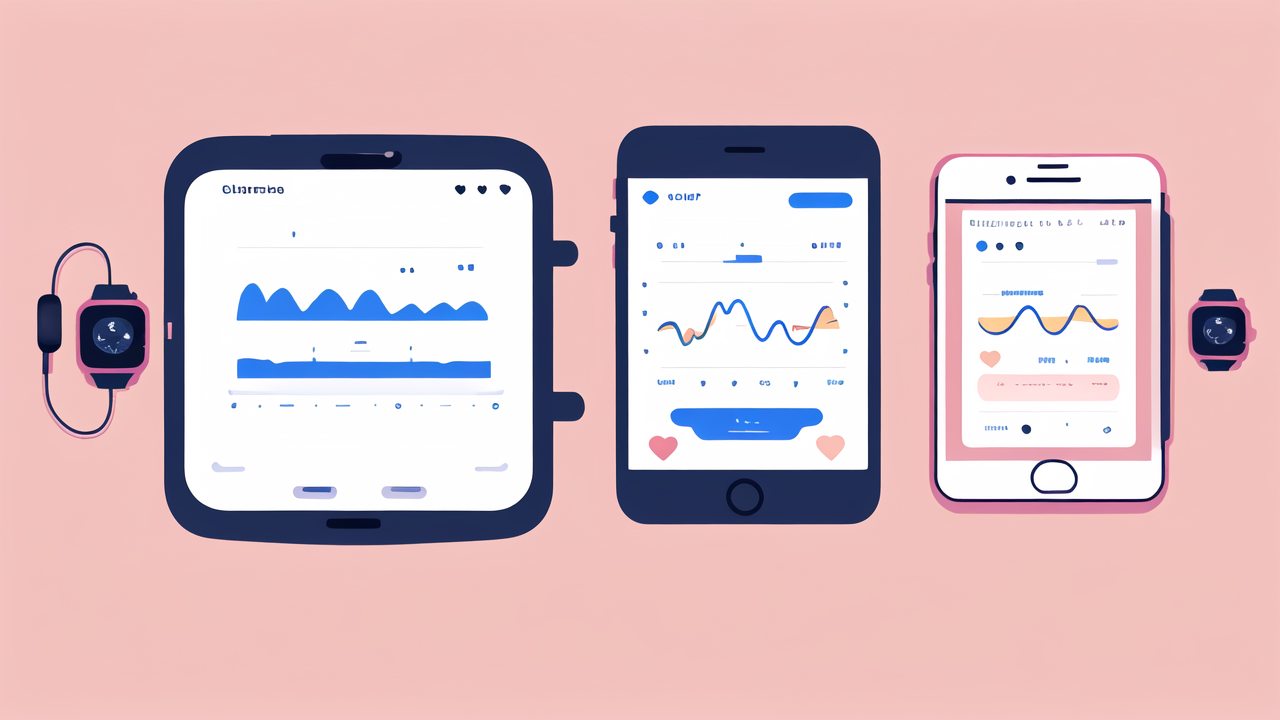Understanding the Differences: Pulse Watches and Smart Smart Watches Explained
The Evolution of Fitness Wearables
Fitness wearables have come a long way since their inception. They began as simple pedometers. These devices counted steps and not much else. Over time, they evolved into more advanced tools. Pulse watches were an early innovation. They added heart rate monitoring to step counting. This was a big leap forward for fitness tracking. It allowed users to better understand their exercise intensity.

Smart watches came later. They brought a whole new level of functionality. These devices combined fitness tracking with smartphone features. They could display notifications, run apps, and even make calls. The line between fitness tracker and mini-computer began to blur. This evolution has given users more choice, but also more complexity.
Key Features that Distinguish Pulse Watches from Smart Smart Watches
Pulse watches and smart watches have distinct features that set them apart. Here are the key differences:
- Focus: Pulse watches focus on fitness metrics. Smart watches offer a broader range of features.
- Battery life: Pulse watches typically have longer battery life. Smart watches need charging more often.
- Display: Pulse watches often have simpler displays. Smart watches have larger, more interactive screens.
- Sensors: Both have heart rate sensors. Smart watches may have additional sensors like GPS.
- Connectivity: Pulse watches may have limited connectivity. Smart watches offer Wi-Fi and cellular options.
- Price: Pulse watches are usually more affordable. Smart watches can be quite expensive.
These differences make each type suitable for different users and needs.
How Pulse Watches and Smart Smart Watches Fit into the Wider Fitness Ecosystem
Pulse watches and smart watches play different roles in the fitness ecosystem. Pulse watches are specialized tools. They focus on health and fitness data. They often integrate well with fitness apps and platforms. This makes them ideal for serious athletes and fitness enthusiasts. They provide detailed insights into workouts and recovery.
Smart watches are more versatile. They can track fitness, but also do much more. They connect with a wide range of apps and services. This makes them suitable for casual users who want fitness tracking and smart features. They can be part of a larger digital lifestyle ecosystem. However, this versatility can sometimes come at the cost of specialized fitness features.
Both types of watches can sync with other fitness devices. These might include smart scales, blood pressure monitors, or sleep trackers. The choice between them often depends on how deeply a user wants to dive into fitness tracking.
Analyzing the Benefits: Why Pulse Watches Are Superior for Fitness Enthusiasts
Advantages of Pulse Watches for Tracking Health and Fitness Metrics
Pulse watches offer several advantages for tracking health and fitness metrics. Here's why they excel:

- Accuracy: Pulse watches often have more accurate heart rate sensors. This is crucial for fitness tracking.
- Simplicity: They focus on essential metrics without distractions. This makes data easy to understand.
- Longevity: With fewer features, they tend to have longer battery life. This means less charging and more tracking.
- Durability: Many pulse watches are built to withstand tough workouts. They're often water-resistant and shock-proof.
- Specialization: Some pulse watches offer advanced metrics like VO2 max or recovery time.
These features make pulse watches ideal for serious fitness enthusiasts. They provide the data needed to optimize workouts and recovery.
The Role of Pulse Watches in Enhancing Workout Performance
Pulse watches play a crucial role in enhancing workout performance. They do this in several ways:
- Real-time feedback: Users can see their heart rate during exercise. This helps maintain the right intensity.
- Zone training: Many pulse watches allow users to set heart rate zones. This is useful for interval training.
- Recovery monitoring: Some watches track recovery time. This helps prevent overtraining.
- Goal setting: Users can set and track fitness goals. This provides motivation and direction.
- Progress tracking: Over time, users can see improvements in their fitness levels.
By providing this data, pulse watches help users train smarter, not just harder. They can optimize their workouts for better results.
Pulse Watches and User Experience: A Closer Look at Consumer Satisfaction
Consumer satisfaction with pulse watches is generally high among fitness enthusiasts. Here's why:
- Reliability: Users appreciate the consistent performance and long battery life.
- Ease of use: The focused features make pulse watches simple to operate.
- Data accuracy: Fitness enthusiasts value the precise metrics these watches provide.
- Comfort: Many pulse watches are designed for all-day wear, even during intense workouts.
- Value: They often offer advanced fitness features at a lower price than smart watches.
However, some users do note limitations. These might include lack of smart features or smaller displays. But for those focused on fitness, these aren't usually deal-breakers. The specialized nature of pulse watches often leads to high satisfaction among their target users.
Making the Choice: Pulse Watches and Smart Smart Watches in the United States Market
Market Trends and Consumer Preferences in the Fitness Wearable Space
The fitness wearable market in the United States is dynamic and growing. Here are some key trends:

- Rising popularity: More people are using fitness wearables than ever before.
- Health focus: There's increased interest in health tracking, not just fitness.
- Feature expansion: Devices are adding more sensors and capabilities.
- Integration: Users want devices that work with their other tech and apps.
- Personalization: There's a growing demand for tailored insights and recommendations.
Consumer preferences vary. Some prefer simple, focused devices like pulse watches. Others want the versatility of smart watches. Price is also a factor. Many consumers are willing to pay more for advanced features. However, there's still a strong market for affordable, fitness-focused devices.
The Future of Fitness Wearables: What's Next for Pulse Watches and Smart Smart Watches?
The future of fitness wearables looks exciting. Here are some potential developments:
- Advanced sensors: We may see new types of health and fitness data collected.
- AI integration: Devices could offer more personalized insights and coaching.
- Improved battery life: This is a key area for improvement, especially for smart watches.
- Non-wrist wearables: We might see more devices worn on other parts of the body.
- Health integration: Wearables may play a bigger role in healthcare and prevention.
Pulse watches are likely to become even more specialized. They might offer deeper insights for serious athletes. Smart watches will probably become more powerful and efficient. They may start to replace smartphones for some users. The line between the two might blur, with hybrid devices emerging.
A Guide to Selecting the Right Fitness Watch for Your Lifestyle and Goals
Choosing between a pulse watch and a smart watch depends on your needs. Here's a guide to help:
Choose a pulse watch if:
- Your primary focus is fitness tracking
- You want long battery life
- You prefer a simple, easy-to-use device
- You're on a budget
- You don't need smart features like notifications or apps
Choose a smart watch if:
- You want fitness tracking plus smart features
- You're okay with charging your device more often
- You like having a large, interactive display
- You're willing to spend more
- You want a device that integrates with your smartphone
Consider your lifestyle and goals. Are you a serious athlete or casual exerciser? Do you want all-day wear or just during workouts? Answer these questions to find your perfect fit. Remember, the best device is the one you'll actually use consistently.




Leave a comment
This site is protected by hCaptcha and the hCaptcha Privacy Policy and Terms of Service apply.